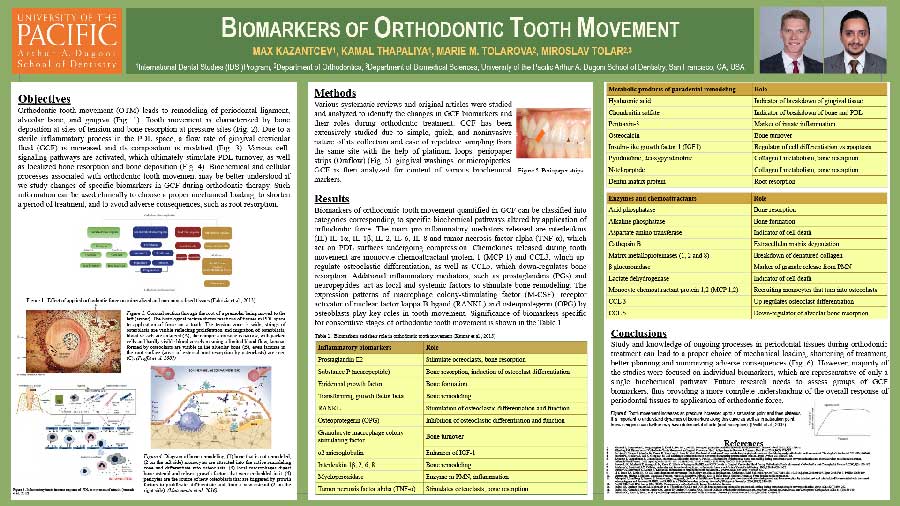Orthodontic tooth movement leads to remodeling of periodontal ligament, alveolar bone, and gingiva. Tooth movement is characterized by bone deposition at sites of tension and bone resorption at pressure sites. Due to a sterile inflammatory process in the periodontal ligament space, the flow rate of gingival crevicular fluid (GCF) is increased and its composition is modified. Biochemical and cellular processes associated with orthodontic tooth movement may be better understood if we study changes of specific biomarkers in GCF during orthodontic therapy. Such information can be used clinically to choose a proper mechanical loading, to improve and shorten a period of treatment, avoid adverse consequences, such as root resorption.
Study and knowledge of ongoing processes in periodontal tissues during orthodontic treatment can lead to a proper choice of mechanical loading, shortening of treatment, and minimizing adverse consequences. However, the majority of the studies focused on individual biomarkers, which are representative of only a single biochemical pathway. Therefore, in the future, research needs to assess groups of GCF biomarkers, thus providing a more complete understanding of the overall response of periodontal tissues to the application of orthodontic force.
Author(s): Max Kazantcev, IDS ’23, Kamal Thapaliya, IDS ’23
Mentor(s): Dr. Tolarova, Dr. Tolar
Dugoni Basic Sciences Award
 Loading…
Loading…
